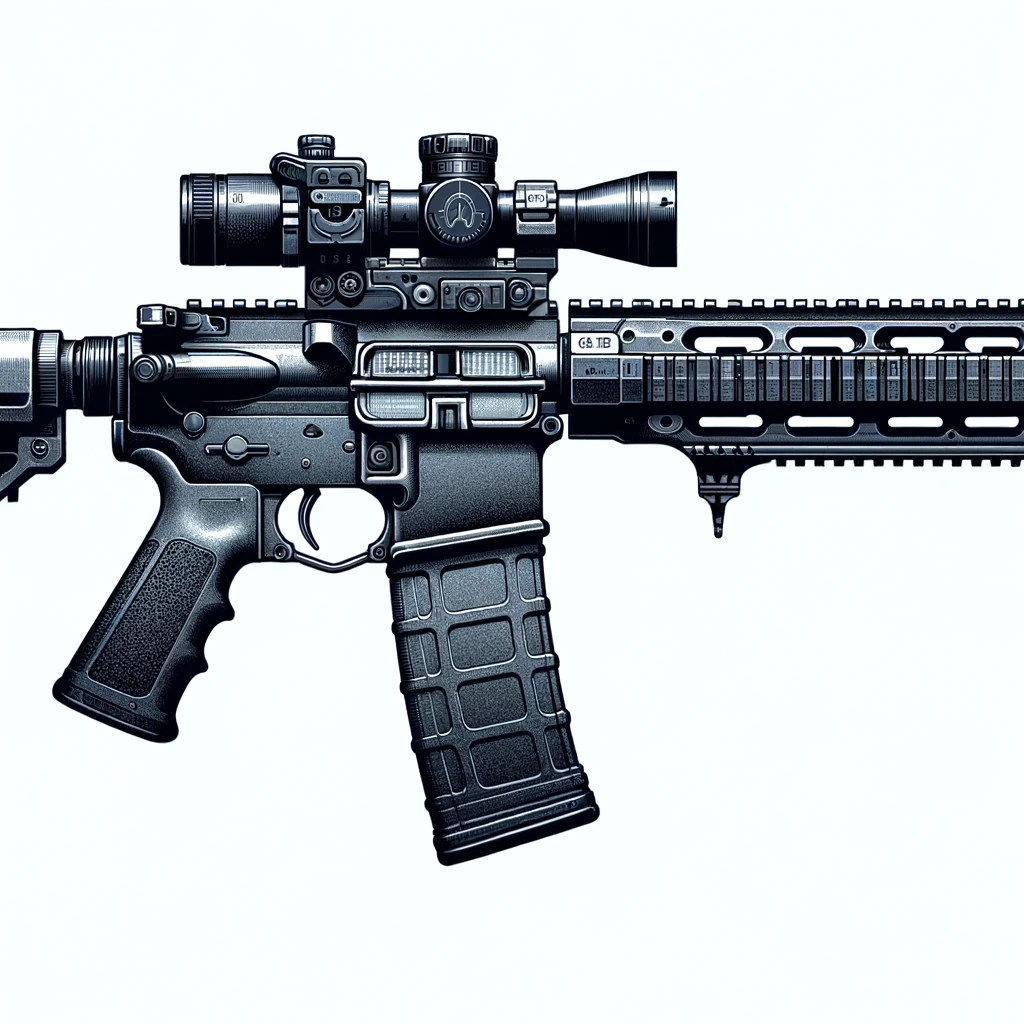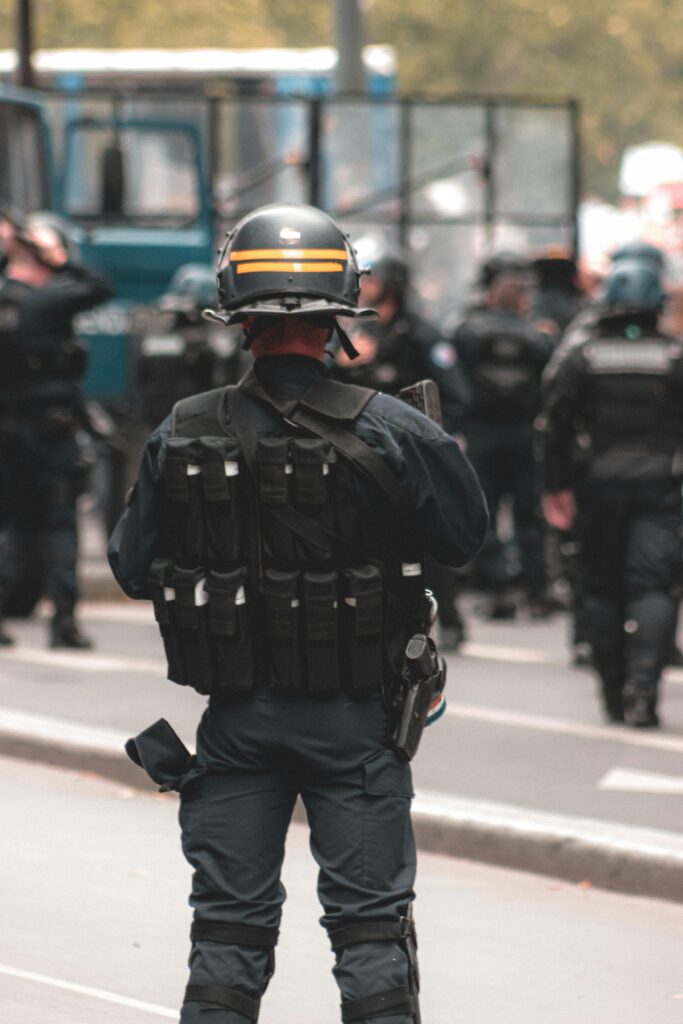
The AR-15 platform has divided America, but also taken over the firearms world. If you’re building a home defense kit, a SHTF collection or just a decent selection of guns, then an AR-15 will be there.
If you’re new to guns, or even if you’re not, you might find yourself agonizing over so many choices. And one of the biggest choices you face is a Direct Impingement vs Gas Piston operating system.
There are pros and cons with both systems, but we’re going to try and lay it out simply for you here.
The Basics of Operation
The AR-15, designed by Eugene Stoner in the 1950s, originally employed a DI system. In a Direct Impingement operating system, when you fire a round, gas travels down the barrel and into a gas tube, which runs back into the receiver. This gas then pushes the the bolt carrier group (BCG) to cycle the action. eject the spent case and chamber the next round. Direct Impingement systems are simple, effective, lightweight and can be cheap.
Instead of directing gas back into the receiver, a gas piston system uses the gas to drive a piston that is located above the barrel. The movement of the piston driven system, in turn, forces the operating rod into the BCG and cycles the action. This method keeps the hot gases and associated carbon residue in the front part of the rifle, away from the shooter and the Bolt Carrier.
That cuts down ovreheating and fouling of the system and gas piston systems are built for absolute reliability and the guarantee that it goes bang when you need it most. Gas piston systems tend to be heavier, and more expensive, but some military units insist on a piston driven system. It matters more in a full auto machine gun, where overheating is a real thing.
With civilian semi-automatic rifles overheating is less of an issue, but if you do shoot hundreds of rounds at a time and want to maintain absolute precision and reliability, then the piston driven system could still be the one.
Performance and Handling
Recoil and Shooting Experience: One of the most discussed aspects of the DI vs. piston gun debate is the difference in recoil and the overall shooting experience. Generally, DI rifles are noted for their smoother recoil, because the gas pushes the Bolt Carrier Group and travelling in one line. This smooth action can lead to a perception of increased accuracy and control, which also helps with follow up shots.
A piston system, on the other hand, introduces an additional component (the piston) that moves, which can slightly alter the recoil pattern. Some shooters find this leads to a more abrupt recoil, though modern designs have greatly minimized these differences. The very best systems are engineered to such an extent that the barrel harmonics have been tuned and they feel the best of the bunch.
Heat and Fouling: A significant advantage of piston driven operating systems is their ability to keep heat and fouling away from the rifle’s action and the shooter. By venting gases at the front, piston gun operating systems ensure the Bolt Carrier and chamber remain cooler and cleaner over extended firing sessions. DI systems direct hot gases and carbon residue directly into the receiver. This leads to higher temperatures and more rapid fouling of the action.
That means you’ll have to do more cleaning and maintenance, but unless you’re sending thousands of rounds downrange with a machine gun, then a failure due overheating really isn’t that much of a threat these days. But if you struggle with heat build up, then a piston driven system could still be an answer.
For an extreme example of overheating, and melting a suppressor, check here. It’s not 100% relevant, but it is entertaining…
Maintenance and Reliability
Cleaning and Upkeep: The maintenance routines for DI and GP systems reflect their operational differences. DI rifles, due to their propensity to collect carbon deposits within the receiver, require more frequent cleaning. However, the simplicity of the DI system means that disassembly and cleaning are relatively straightforward. GP rifles, while keeping the action cleaner, have more components (such as the piston and the gas block) that need occasional attention. These additional parts can make disassembly and reassembly more complicated..
Reliability: The debate over the reliability of DI vs. GP systems often centers on their performance in adverse conditions. GP systems are touted for their enhanced reliability, especially in dirty or harsh environments, because the critical internal components remain cleaner. This has made GP a preferred choice in military applications where conditions can be unpredictable. However, modern DI systems have got much better. A quality DI system can be exceptionally reliable and in many ways it has closed that gap and taken over.
Weight and Complexity
System Weight: The addition of a piston and associated hardware in gas piston rifles typically results in a slight increase in weight over DI systems. For users where every ounce counts, such as competitive shooters or those who need to carry their rifle all day, the lighter DI system can be a winner.
Mechanical Complexity: The beauty of the Direct Impingement system lies in its simplicity, with fewer moving parts and a direct action on the Bolt Carrier. This simplicity translates to fewer points of failure and a streamlined design. The GP system, while not overly complex, has more part with the piston and operating rod. But the fact its sole purpose is to direct gases away from the BCG through a separate gas port means it’s cleaner, so there’s that.
Cost Considerations
Gas piston systems used to be more expensive than the Direct Impingement system, reflecting the additional components and engineering involved. That price gap has narrowed over time, but you won’t find a cheap AR-15 with a gas piston operating system. For enthusiasts on a budget, DI rifles offer an excellent balance of performance and value.
And if you’re really looking for an affordable AR-15, you’re going to have to buy an AR-15 with a DI system. And if you want gas piston guns, then you should get ready to spend big on the custom AR-15 rifles out there.
Technical Differences Between Gas Blocks and Gas Systems
The gas blocks serve fundamentally different purposes. In Direct Impingement guns, the block is simpler and serves primarily as a conduit. It directs the propellant gases from the barrel through a small port and into a gas tube. This gas tube then channels the gases directly back into the bolt carrier group (BCG), that pushes the bolt to cycle the action. The design is minimalistic, with fewer moving parts, contributing to a lighter and less complex system in Direct Impingement ARs.
Conversely, the gas block in a GP system is more complex due to its additional components. It houses a piston and sometimes a spring that are actuated by the propellant gases. When gases enter the block, they push the piston, which in turn operates the BCG indirectly through the operating rod. This system keeps the action cleaner by venting gases through a gas port at the gas block, away from the receiver, but adds weight and complexity with more parts involved.
Each system’s gas block reflects its operational philosophy: simplicity and direct action for Direct Impingement guns, versus cleanliness and mechanical separation for GP.
Mid-Length vs Carbine Length Gas Systems
The mid-length and carbine length gas systems in AR-15 rifles primarily differ in the location of the gas port along the barrel and, consequently, the length of the gas tube. A carbine length system, shorter in design, places the gas port closer to the rifle’s chamber. This results in a shorter gas tube and a more abrupt cycle of the action due to the higher gas pressure and faster gas return. The increased pressure can lead to a sharper recoil and potentially faster wear on internal components but allows for a more compact rifle setup, which is advantageous in close quarters for military use where SBRs are common.
On the other hand, a mid-length gas system features a gas port that is located further down the barrel, leading to a longer gas tube. This design moderates the pressure and speed at which the gas travels back to cycle the action, resulting in a smoother shooting experience with less perceived recoil and wear on the rifle’s parts. The mid-length system bridges the gap between the carbine and rifle-length systems, offering a balanced performance that suits a wide range of shooting styles and purposes.
Obviously this isn’t really about DI vs gas piston rifles, but it’s closely related and often part of the same conversation.
Making Your Choice
The decision between Direct Impingement and Gas Piston guns ultimately boils down to personal preference, intended use, and your priorities. If you want a simple, lightweight and smooth shooting rifle, Direct Impingement ARs are the right choice. Conversely, if you want a cleaner system, you shoot hundreds of rounds at a time or you need absolute reliability, the gas piston driven system is the one.
Conclusion
Both Direct Impingement systems and the Gas Piston system for the AR-15 platform come with pros and cons. By understanding the differences in performance, maintenance, and handling characteristics, you can choose the system that aligns with your needs.
There are other big choices to make next, but hopefully this guide helped you make the decision between Direct Impingement rifle and gas piston guns.


